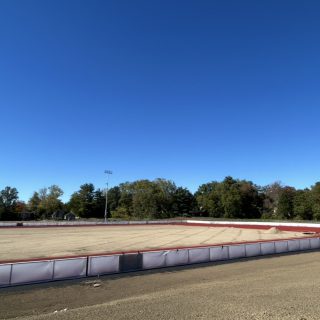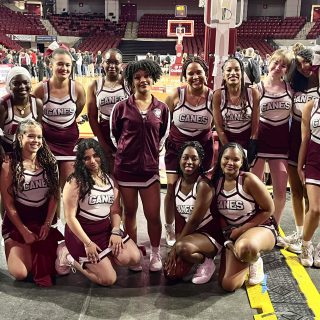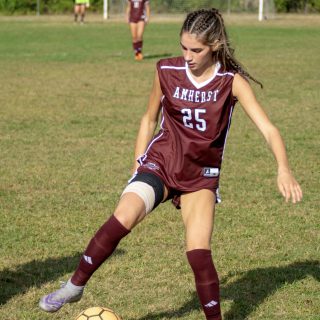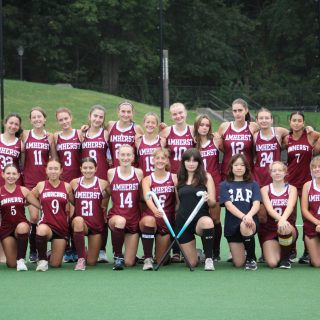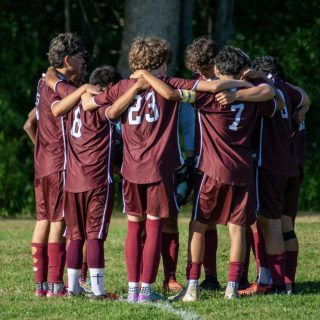Swimming and Diving team wades on, despite funding woes

In October of 2024, just weeks before the official Amherst swimming and diving season was set to begin, the home base pool at ARMS stopped being usable due to a water pump issue. This caused a state of panic, with coaches and swimmers knowing funding is limited and there was no telling if the team would be able to compete during the upcoming season.
“[Taking care of] the middle school pool is very much a partnership between the town and the school district,” said Head Coach Denise Leckenby, of both the boys and girls teams; she is also the Aquatics Director for the town, managing all of the town pools and lessons. “The two sides have to come together to figure out where the money is coming from to fix it.”
Leckenby said sometimes it requires her or my athletes to communicate concerns to their families, who then raise their voices to the town and school. “We all care about the pool, and we needed it up and running as soon as possible,” said Leckenby.
While funding for the pump eventually came through in time for the winter season, this was not a new worry for the team. Leckenby noted that the diving board was also out of commission for many years. According to Assistant Coach Keith McFarland, one repair can open up a can of worms related to other repairs. “My understanding was that [the board] needed repairs to bring it up to safety code, but if we were to fix the diving board, there would be other areas of the facility that also need to be brought up to code, and we didn’t have the funding.” That meant divers in Amherst who wanted to compete at the high school level didn’t have the opportunity for over five years.
Athletic Director Victoria Dawson said funding for sports is a constant worry, and she wishes “we could hit the jackpot” and reduce the anxiety over it. Leckenby agreed that more money would mean more security, noting, “There were some days where I was worried we wouldn’t have a pool to train in at all this high school season.”
Most of the funding that comes in for athletics is money from a revolving fund. “A revolving fund included [using the fees student athletes] pay to play to offset the other costs,” said Dawson, noting that “the revolving fund isn’t that big” and is mostly used to cover “essential stuff, everything necessary to run your sport [from day to day].” Those essential things include the computer system, swimming fees for the MIAA, paying for wim officials, swim caps, busing, and coach payments.
“There are a good number of things that people don’t know we have to pay for behind the scenes for different sports,” said Dawson.
Leckenby also heads the girls’ and boys’ teams under one contract. “I think running two teams because of the size of the team has a lot of moving parts. I can imagine that if I had just a girls’ team of 16 or 17, it would be much more straightforward,” she said.
On the one hand, Leckenby said, operating as one unit is “healthy for all of us.” On the other, it would be amazing to “have two head coaches,” while continuing to “benefit from training all together and having one philosophy.” Merging her role to save money alone affects things like “team morale and climate, and culture.”
Despite the funding issues, the coaches mentioned how their main priority is to support athletes through the season. “I feel a deep sense of responsibility for my athletes,” said Leckenby, “I want them to feel that they’re given the best environment so that they can achieve their goals for any given season.”
